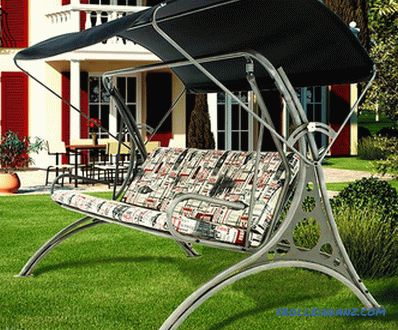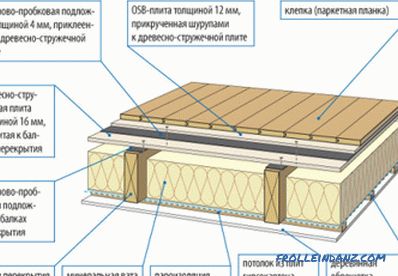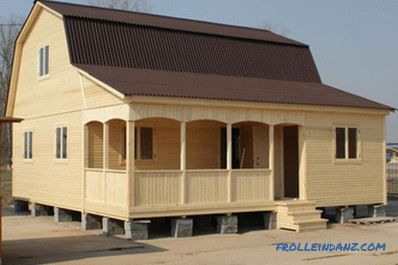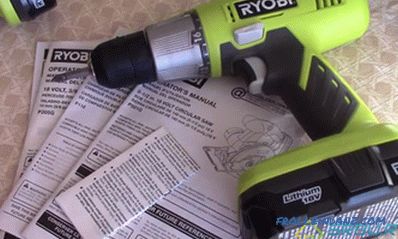In the recent past, almost all dishes were made of clay or wood. The only exceptions were pans. This was the point: the food cooked in a clay pot had a special aroma. A wooden spoon never heated. In the named products no chemistry was used. Even to make wooden spoons and bowls shine, neither varnishes nor paints were used - they were simply boiled in hemp or linseed oil. The effect of this was excellent: wooden products were soaked with oil and became more attractive.

To make the wood surface shine and shine, oil can be applied to it.
Impregnation of wood with oil has been used to this day, although modern wood finishing technologies differ from ancient methods. Currently, soaking the wood does not require boiling the product itself. But boiled oil is used for this purpose. But to understand all the tricks of impregnation, it is necessary to understand the processes of finishing wood products more deeply.
Why impregnation is necessary

Classification of types of wood protection.
First consider the need for finishing coatings and their types. Any material requires protection - this is an undisputed fact. This is the main task of any impregnation - to protect the tree from pests, fungal infections and excessive moisture, which can provoke the appearance of fungus. The second impregnation task is to hide the processing defects of the product or minor defects of the material itself. Such impregnations include: staining of wood, waxing and impregnation with oil. The moring of wood does not have a protective function; therefore, it is rather a decorative impregnation.
Waxing a wooden surface can significantly improve the external attractiveness of wood. The essence of waxing is that hot wax is applied to the wooden surface with a large layer, after which the excess wax is either simply removed with a soft cloth or rubbed into the surface. At the same time, all microcracks on the surface of the tree are clogged with wax (and they are always present), so the surface becomes smoother and gets excellent protection from moisture.
What you need to impregnate
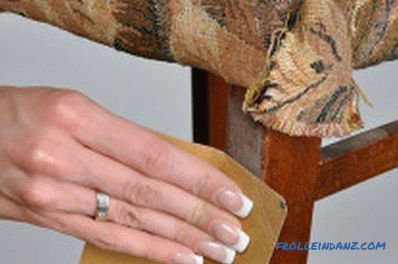
Before you apply the oil on a wooden surface, you must clean it with emery cloth.
Impregnation of wood is the most powerful protection of wood, since oil penetrates deep into its structure. For wood impregnation with oil at home you will need:
- oily liquid for impregnation;
- capacity;
- brush;
- soft fabric;
- sandpaper.
Impregnation of wood begins with surface preparation. First, the outer part must be carefully cleaned (this applies to old surfaces). The fact is that the tree absorbs dust and other pollution very well. If the cleaning of the wood is not carried out, then all these blockages together with the oily liquid will fall deep into the structure, and it will be completely impossible to remove them. We clean the wood with sandpaper and blow away the wood dust from the surface. After that, you can already begin to apply the composition to the surface.
How to choose an oil
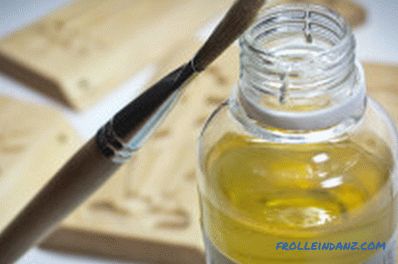
In practice, flaxseed oil is often used for treating wooden surfaces.
Various oils can be used as impregnation. The choice of special compounds in the market of building goods is wide. When choosing it, do not rush, because by mistake you can purchase a product that is not suitable for impregnating certain wood. The density of a tree of different breeds varies greatly, so there are several oils just for the type of wood. Such highly specialized fluids are not worth buying.
It is better to choose an oil intended, for example, for hardwood trees. Such a substance has a wider spectrum of action, so it will be more difficult to make a wrong choice. Do not forget to pay attention to other parameters of the oil. Do not be surprised if you see information on the container that the oil has a coloring effect. Manufacturers of the named product specifically took this step. Firstly, it is much easier to work with such an oil product, and secondly, after drying the surface, the wood will get a richer shade. For impregnation can be used not only specialized composition of the oil. In practice, very often used and conventional compositions of plant origin: flax, hemp, tar. Drying oil can also be considered as oil for impregnation (by the way, it was the linseed oil that was used for the first time to impregnate wooden surfaces).
Procedure and technology for applying oil
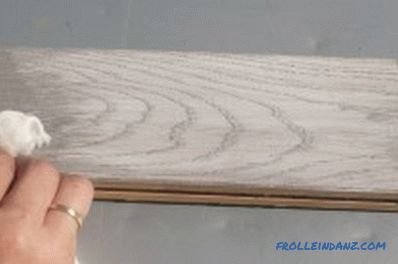
It is necessary to apply oil on wood along the structural fibers.
Industrial-grade oil is applied to wood in accordance with the attached instructions. Usually, the oil is applied in a heated form.So the particles of oil will have greater speed and quickly penetrate deep into the structure of the tree. Impregnation of the wood surface with oil is carried out with an ordinary paint brush of medium hardness.
The brush width is selected depending on the width of the product itself. Smears should be applied in the same direction along the structural fibers. If the impregnated surface has a large width, then it is covered with oil from top to bottom. Good impregnation should be abundant, and it is applied in 2-3 layers with an interval of several hours (it all depends on weather conditions).
Usually the time interval between the application of layers is 2 hours. Treat the last layer with a dry cloth. Movement is also carried out along the structural fibers. We press the cloth to the surface strongly, as if we are trying to press the oil even deeper. Why is this? After applying several layers of oil, the top layer of wood is somewhat softened, so the surface became slightly rough. Strong pressing with a soft cloth will return all particles to their previous position. After drying the wood will be very smooth.
Impregnation dries out not instantly, so put all work on the impregnated surface for a while (about a week). To dry the tree should under normal weather conditions, but in a ventilated area. Direct sunlight will be the enemy for impregnation, therefore, the product must be dried indoors. Further, the surface should be simply polished. There is no need to use special chemical compounds for this procedure, since the impregnation itself already gives the product a beautiful look.
Features of the wood grade and additional finishing
Conifers do not need to be impregnated with oil, as they contain natural resins, which can also be considered as impregnation.
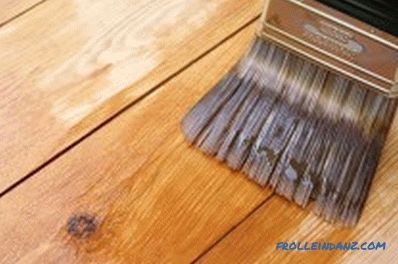
Since the coniferous woods do not need to be impregnated with oil, use varnishing to protect them.
Only one drawback: the resin can evaporate. Products from coniferous trees are also subjected to partial impregnation after several years of operation. It is senseless to use oils for these purposes, since the resins do not allow the oil to penetrate deep into the wooden structure. The need exists only to protect the top layer of the product. Waxing or varnishing gives such wood a beautiful appearance and provides the necessary protection for several years. After a certain period of time, waxing or varnishing must be repeated. By the way, wood impregnated with oil composition also has non-eternal protective ability. Usually this coating is valid for about 5 years. After this period, the entire procedure described should be repeated. However, in this case there is no need to apply several layers: an oil product is present in the inner part of the tree and continues to protect the product.
More reliable protection should be considered the use of several methods of finishing the material. Often, after soaking and polishing, a layer of varnish is applied to the product. Varnish creates a barrier to the evaporation of oil particles, so the impregnation persists for a longer period. But the varnish layer will have to be updated in a while. If you chose this way to protect the tree, then we can recommend using a matt varnish. On a surface impregnated with oil, such a varnish looks more organic.
Didn't find the answer in the article? More information on the topic:
-
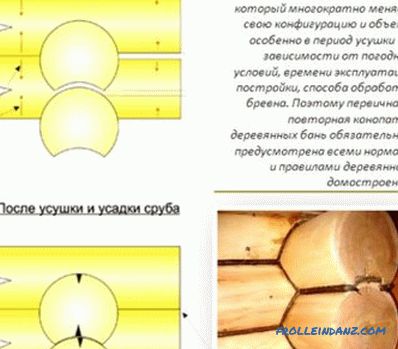
How should I properly caulk a bath?
Instructions on how to properly caulk a bath. A list of tools for the job, recommendations for choosing a compactor for a log house, as well as a description of two caulking methods.
-
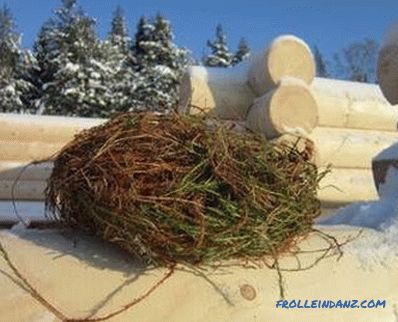
How to make a cauldron of a wooden house?
Cauldron of a wooden house: features of the choice of material for carrying caulks, technology caulking of a wooden house. Tools and materials used in the work.
-
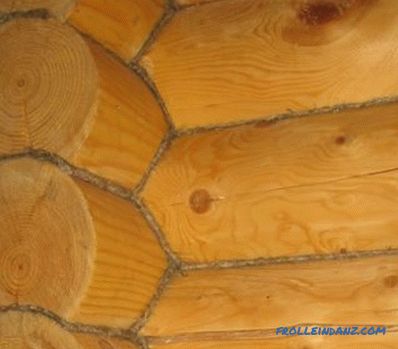
With what and how best to caulk a log house
Information about how to caulk a log cabin. Requirements for materials for bath caulks. Popular materials are moss, sealants, linen and jute. Procedure for caulking logs.
